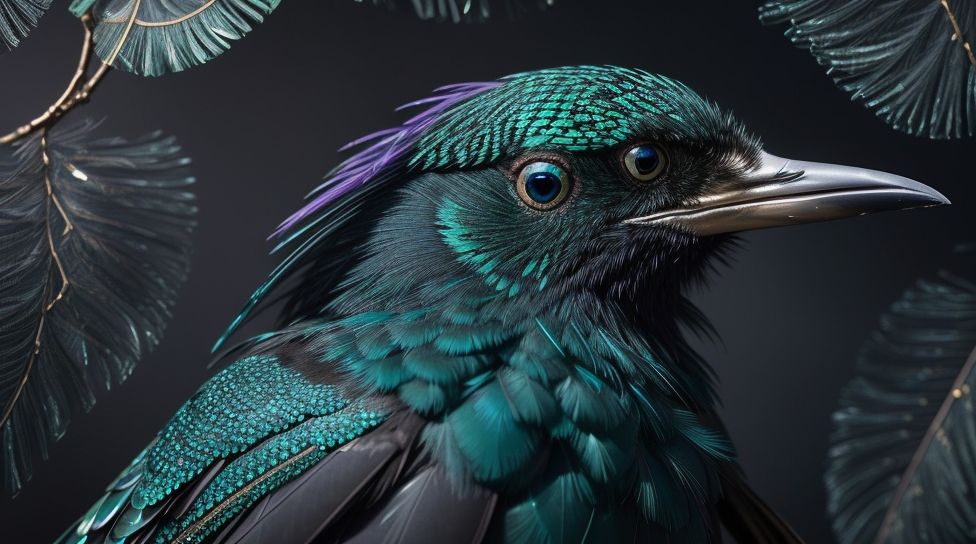What Are Starling Birds
Starlings, scientifically known as Sturnus vulgaris, are a group of small to medium-sized passerine birds. They are characterized by their striking iridescent plumage, which appears black from a distance but reveals colorful patterns when seen up close. Starlings belong to the family Sturnidae and are renowned for their remarkable vocalizations and murmuration displays.
These highly adaptable birds are native to Europe and Asia, but they have also established themselves in other parts of the world, including North America. Starlings are omnivorous and have a diverse diet that includes insects, fruits, and seeds. They are known for their gregarious behavior, often forming large flocks, especially during the non-breeding season.
How To Keep Starlings Out Of Bluebird Feeders
Bluebird enthusiasts often face the challenge of starlings competing for space at their feeders. To keep starlings out of bluebird feeders, consider using specially designed feeders with entrance holes that are too small for starlings but perfect for bluebirds. These feeders have openings that are about 1.5 inches in diameter, allowing bluebirds to access the food while keeping larger birds like starlings at bay.
How To Keep Starlings And Grackles Away From Bird Feeders
Both starlings and grackles are known for their voracious appetites and can quickly deplete bird feeders. To deter these birds, opt for feeders with features like adjustable perches or weight-sensitive mechanisms. These types of feeders can prevent larger birds from accessing the food. Additionally, offering safflower seeds, which starlings and grackles dislike, can help attract other bird species while keeping these birds at bay.
How To Discourage Starlings From Bird Feeders
Discouraging starlings from your bird feeders can be achieved by using specific bird feed blends that are less appealing to them. Avoid mixes with cracked corn or milo, as starlings are fond of these seeds. Instead, choose blends that contain sunflower seeds, which are preferred by many other birds. Additionally, consider using feeders with baffles or cages to limit access for starlings.
How To Stop Starlings Eating All The Bird Food UK
In the UK, Starling Birds can be quite persistent at bird feeders. To prevent them from consuming all the bird food, try using feeders designed to exclude larger birds or adjust the feeder settings to make it difficult for them to access the food. Providing suet cakes or feeders with suet compartments can also help attract smaller birds that starlings may not favor.
How Do I Get Rid Of Starlings Birds
Getting rid of starlings, especially when they become a nuisance, requires a humane and effective approach. Consider implementing deterrents like scare devices, reflective tape, or decoy predators to discourage them from your property. If needed, consult with local wildlife experts or pest control services for advice on managing starling populations in a responsible manner.
How Does One Get Rid Of Starlings At Their Bird Feeders?
To get rid of starlings at your bird feeders, use feeders designed to exclude larger birds by adjusting perch lengths or employing weight-sensitive mechanisms. Choose bird feed blends that are less attractive to starlings and more appealing to other bird species. Additionally, placing feeders strategically away from sheltered areas can reduce starling activity.
Why Do Starlings Attack Baby Birds
Starling Birds are known to be aggressive competitors for nesting sites and resources. In some cases, they may attack the nests of other bird species, including baby birds, to gain access to nesting sites or to eliminate potential competitors. This behavior, while natural for starlings, can have significant impacts on local bird populations.
How To Run Off Starlings And Grackle Birds
Running off starlings and grackles can be achieved through various means. Use visual and auditory deterrents like scarecrows, reflective objects, or loud noises. Adjust your bird feeder setup to limit access for larger birds. Regularly clean up spilled food to reduce their attraction. Experiment with different tactics to find what works best for your specific situation.
How To Keep Crows And Starlings Away From Your Bird Feeder
Keeping crows and starlings away from your bird feeder requires a combination of strategies. Use bird feeders with features that discourage larger birds, like weight-sensitive perches. Place feeders strategically away from areas favored by these birds. Offering alternative food sources like suet or safflower seeds can also help attract other, smaller bird species while deterring crows and starlings.
What Is The Lifespan Of Starling Birds
Starling birds, known for their iridescent plumage and melodious songs, have a lifespan that can vary depending on several factors. On average, the lifespan of a wild starling birds ranges from 2 to 15 years. However, in captivity, where they are protected from predators and have a stable food supply, starlings can live longer, often reaching up to 20 years.
How To Attract Starlings To Your Birdhouse
Attracting starlings to your birdhouse can be a delightful experience for bird enthusiasts. Starlings prefer birdhouses that are spacious and offer a comfortable nesting environment. To attract them, provide a birdhouse with a round entrance hole measuring about 1.5 inches in diameter. Fill the birdhouse with dry grass or straw to create a cozy nesting spot. Additionally, offering suet, mealworms, and fruits in your yard can entice these birds to visit and potentially nest in your birdhouse.
How To Identify Male And Female Starlings
Male and female Starling Birds can be challenging to distinguish visually because they share similar plumage. Both have glossy black feathers with specks of white, but there are subtle differences. During the breeding season, males may exhibit slightly brighter and glossier plumage. Another way to identify them is through their behavior; males are often more vocal and engaged in courtship displays.
When Do Starlings Migrate
Starlings are known for their remarkable migratory behavior. In North America, many Starling Birds populations migrate during the fall and winter months. The timing of migration can vary depending on location, but it typically begins in late summer or early autumn. These flocks of starlings embark on long journeys to find warmer wintering grounds and return to their breeding areas in the spring.
Can Starlings Mimic Human Speech
Yes, Starling Birds are talented mimics and can mimic various sounds, including human speech. They have a remarkable ability to imitate sounds from their environment, which includes the sounds of other birds, animals, and even mechanical noises. While they might not be as proficient as parrots in mimicking speech, starlings have been known to surprise people with their ability to reproduce words and phrases.
Are Starlings Considered Invasive Species
Starling Birds are indeed considered invasive species in many regions, including North America. They were introduced to North America in the late 19th century, and their populations have since exploded. Their rapid spread and competition with native bird species for resources have raised concerns among conservationists. While they are fascinating birds, their invasive behavior has had significant ecological impacts.
How To Protect Your Garden From Starlings
Gardening enthusiasts often face challenges when Starling Birds visit their gardens. To protect your garden from these birds, consider using bird netting to cover plants and fruits. Using scare tactics like reflective tape or decoy predators can also deter starlings. Additionally, providing bird feeders with selective access for smaller birds can help minimize starling visits to your garden.
What Do Baby Starlings Eat
Baby Starling Birds, also known as chicks, primarily feed on an insect-based diet. Their parents gather a variety of insects, including beetles, caterpillars, and spiders, to feed them. As the chicks grow, the parents gradually introduce fruits and seeds into their diet. Providing a diet rich in protein is crucial for the healthy development of baby starlings.
How To Prevent Starlings From Nesting In Your Roof
Preventing Starling Birds from nesting in your roof is important to avoid potential damage and noise. Start by sealing any openings or gaps in your roof that starlings could use as entry points. Install bird spikes or bird netting in areas where they tend to nest. Make sure to do this during non-nesting seasons to avoid trapping birds inside.
Do Starlings Mate For Life
Starling Birds do not typically mate for life. They are known for their communal nesting habits, with males often attempting to attract multiple mates during the breeding season. While they may form temporary pair bonds for raising their young, these bonds are not usually long-lasting.






















